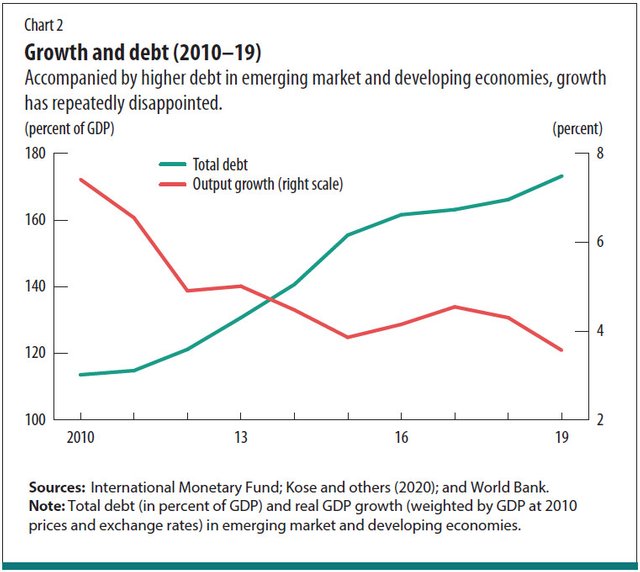The Diminishing Impact of Debt on GDP Growth
Be it any crisis in the world, the common policy of all central banks is to print money.
The novel coronavirus pandemic is just another example. As the pandemic impacted GDP growth, central banks around the world pursued expansionary monetary policies.
The Federal Reserve has committed to keep interest rates near-zero levels through 2023. However, does this help in boosting growth?
The International Institute of Finance reported in July 2020 that global debt has surged to a record of 331% of GDP.
Are there any positive implications?
The answer is NO.
Let’s look at the chart below that gives the rise in global debt and the output growth.

Clearly, even with an increase in global debt, output growth has not been impacted. This is the diminishing impact of debt on GDP growth.
If this continues, we will soon reach the zero-hour. Where additional debt has not impact on GDP growth.
So where will the money go?
The answer is in speculation across asset classes, which will also manifest in the form of inflation.
I don’t see central banks putting an end to money printing.
Therefore, the best idea for investors is to ensure that investment across asset classes helps in beating inflation and retaining the purchasing power of money. Assets classes include equities, commodities, investment grade bonds and precious metals.